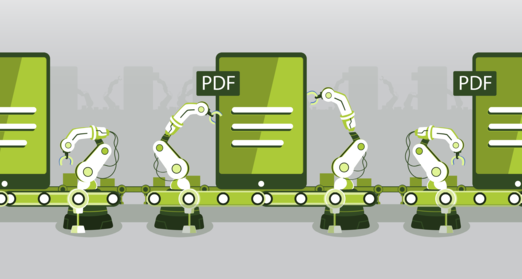
Shift in Perspective: Digital Accessibility and People with Physical Disabilities

What barriers exist in documents for people with physical disabilities? What should one pay attention to, to ensure that all content is accessible to individuals navigating documents and websites with physical disabilities?
"Document Accessibility Is Not Only Essential for Blind People"
In a conversation with Gerhard Nussbaum, the technical director and deputy managing director of the Competence Network Information Technology for the Promotion of the Integration of People with Disabilities, it becomes clear: document accessibility is not solely intended for blind people. While blind or visually impaired individuals are often cited as the primary target group, the issue also impacts physically disabled individuals - people with physical disabilities in various forms and degrees of severity.
Gerhard Nussbaum acknowledges that "…blind individuals naturally benefit the most from accessibility." Nevertheless, the importance of document accessibility for other forms of disability should not be underestimated.
During the discussion with Gerhard Nussbaum, three key aspects of digital accessibility for people with physical disabilities stood out:
Keyboard Accessibility
Keyboard operation (as opposed to using a mouse) is often a fundamental requirement enabling many people with physical disabilities to navigate a website or fill out a form.
However, there are instances where drop-down menus on websites only function via "mouse over," meaning that the menu item only opens when the mouse hovers over the respective element. For people who navigate websites exclusively using a keyboard, this makes the content inaccessible and excludes them.
Additionally, it must be ensured that buttons, for example, do not only respond to mouse clicks but are also accessible through other input methods.
Tab Order
Filling out forms is often a significant hurdle for people with physical disabilities. A key factor here is the tab order, which allows users to move from one form field to the next by pressing the Tab key—in the correct sequence.
Many are unaware that when form fields are created in Acrobat, the tab order reflects the order in which those fields were created. Therefore, careful attention must be paid to the sequence in which fields are created. If a field is forgotten and added later, the tab order can be adjusted in the tab index afterward. However, it’s important to remember this step - do not assume that the order is correct just because the visual placement looks accurate in the document.
Time Constraints
Gerhard Nussbaum highlighted this point with a simple yet effective exercise: "Type a specific number sequence or word using the on-screen keyboard. You’ll quickly realize that you might only input one character or number per second."
This exercise offers insight into the experience of individuals navigating documents or websites using headtracking systems or a head mouse method controlled by head movement. It also illustrates how time constraints can exclude individuals. For example: "Enter this number sequence in 15 seconds to authenticate." This type of time requirement may not be feasible for everyone.
Conclusion
Digital accessibility goes far beyond ensuring that content is screen-reader-friendly. There are numerous types of disabilities that rely on a variety of assistive tools, and these tools need to be supported by accessible document standards.
The Solution: Create accessible PDF documents in line with PDF/UA and WCAG 2.2 standards. Documents that adhere to these standards can be navigated by all assistive technologies, ensuring equal access for all individuals - no matter their abilities.

